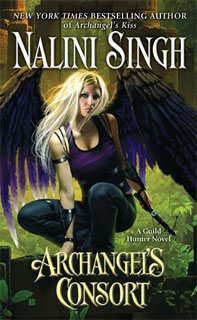
Humanizing the Inhuman
Written by: Beth Woodward, CC2K Books Editor
 A few weeks ago, I reviewed Elisa Paige’s Stealing Time, a book about vampires. In my review, I noted that the male lead did not drink human blood, a la Twilight. In an off-site conversation with our TV Editor, Phoebe Raven, she noted that a lot of vampire fiction does this, in an attempt to “humanize” the vampire characters.
A few weeks ago, I reviewed Elisa Paige’s Stealing Time, a book about vampires. In my review, I noted that the male lead did not drink human blood, a la Twilight. In an off-site conversation with our TV Editor, Phoebe Raven, she noted that a lot of vampire fiction does this, in an attempt to “humanize” the vampire characters.
Phoebe’s absolutely right on this point, but it left me wondering: should we really try to humanize inhuman characters? After all, part of the reason people love these characters is because they are so other, because they do things that an average human would never do. Of course, it all depends on the story the author is trying to tell. But for me, there’s an inherent darkness to these characters, to these stories, that attracts me to them. To negate that, to try to make them more palatable for human morality, sort of misses the point.
Reason 1 NOT to humanize the inhuman: character believability. Many books (and movies and TV shows, for that matter) play with the various mythologies of inhuman characters, but certain things remain constant. With vampires, it’s drinking blood. If it doesn’t drink blood, it’s not a vampire. If it doesn’t shape-shift into a wolf, it’s not a werewolf. At some point, shifting the parameters of what these creatures will do/not do will push the suspension of disbelief too much.
But wait, you say. Drinking animal blood is drinking blood, and the angsty werewolf who doesn’t want to shift is still capable of it. So that brings me to…
Reason 2 NOT to humanize the inhuman: morality is relative. Morals change. What was considered wrong during one time in history and in one society could be perfectly acceptable in another. Likewise, what a centuries-old vampire/demon/angel/etc. considers acceptable probably won’t be the same as what a modern, Western human would. So we have to consider the source.
One of my favorite things about Nalini Singh’s Guild Hunter series (the third book, Archangel’s Consort, just came out a few weeks ago) is how it refuses to humanize its 1,500-year-old archangel hero, Raphael. Raphael is someone who can unapologetically punish one of his vampire underlings by breaking every bone in his body and leaving him out in Times Square for everyone to see. When he begins to fall for a human woman named Elena, that difference between her mortal outlook and his immortal one is a major source of tension between them. But if Raphael were to suddenly become all soft and cuddly, it just wouldn’t make sense for his character. He’s a badass archangel. He comes from a world that is hard and brutal, where power triumphs over sentimentality. Watching the dynamic of the two of them together is one of the things that makes the series so interesting.
How “human” the character is should depend on the age and the background of the character, and the world in which the character lives.
Okay, you might be thinking, that means some inhuman characters might seem more human than others. True enough. So why make this argument at all?
Reason 3 NOT to humanize the inhuman: the darkness within. Violence? Bloodlust? Murder? These fictional creatures represent the dark side of humanity Fiction gives us a safe realm in which to explore our inner darkness, the parts of ourselves that we can’t reveal in polite company. Fiction is the great “What if?” What if you were granted immortality? What if you were given the ability to kill people with impunity? Not to mention…
Reason 4 NOT to humanize the inhuman: sometimes being bad feels so good. I would never advocate violence and murder and mayhem in real life…but in fiction, the bloodier, the better! It’s exciting because it’s the kind of thing that doesn’t happen in most of our realities. We don’t get to kick butt on our way to the office. We don’t get to slay bad guys (or good guys, depending on which side you’re on). We don’t get to be vigilantes or super villians or slay our enemies.
Let’s be honest: it’s kind of fun watching these inhuman characters do things we can’t. On the other hand, angst and self-loathing—not so much fun.
Sometimes, it’s kind of cool to live vicariously. So if fictional vampires and werewolves and demons can’t do it, who can?
And besides…
Reason 5 NOT to humanize the inhuman: sometimes, humans ain’t so good either. In Jeaniene Frost’s Halfway to the Grave, the first book in her Night Huntress series, the hero Bones, tries to argue the heroine, Cat, out of her hatred of vampire by pointing out all the messed-up things humans have done throughout their history. Nothing that inhuman characters have done in fiction is any worse that what real-life humans have done already. So to make a character more human doesn’t really mean anything. There are nasty humans out there doing nasty things.
The way a character behaves, whether human or inhuman, should depend on the character and the story, not the impulse to make the character more sympathetic, palatable…or human.
